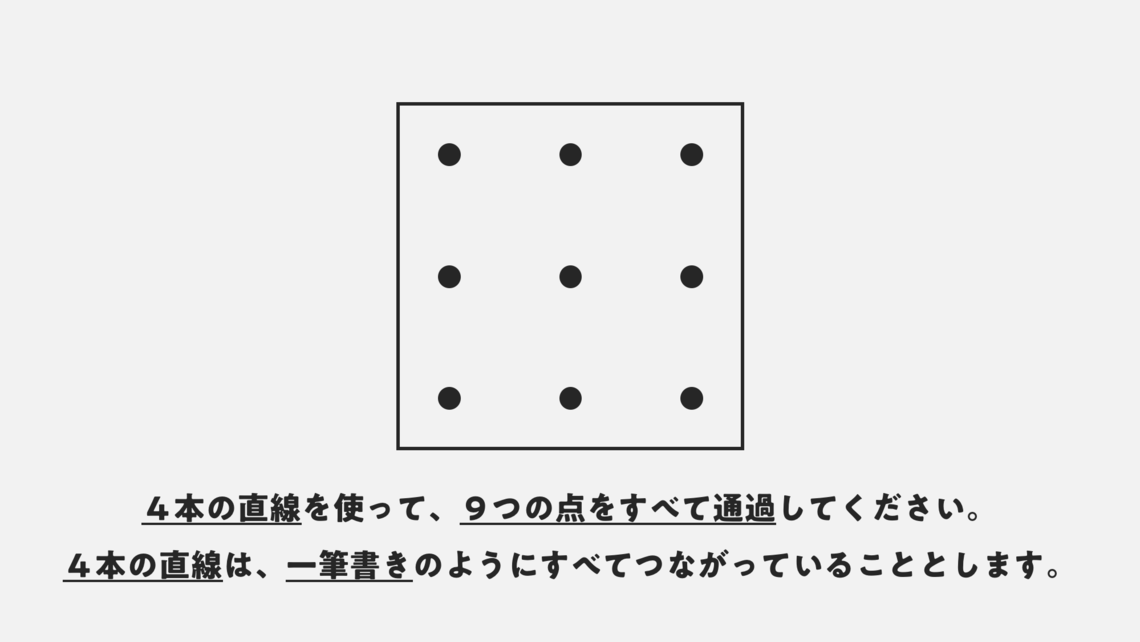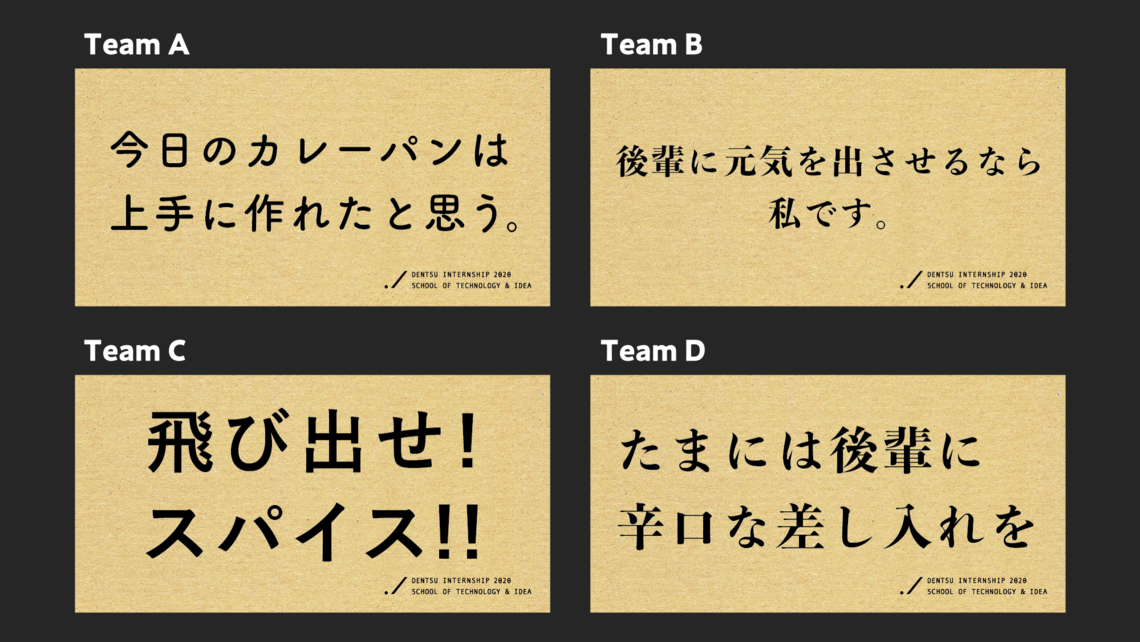Note: This website was automatically translated, so some terms or nuances may not be completely accurate.
"Idea Techniques for Moving Beyond Whims"
WASEDA NEO, which provides a "collaborative space" for leaders shaping the next era to drive true innovation, has partnered with Dentsu Inc.'s news site "Web Dentsu Tsūhō" to launch the "Web Dentsu Tsūhō × WASEDA NEO Collaborative Lecture Series." This online course for working professionals features Dentsu Inc. creators as instructors. The second session's lecturer is Kazuhito Ochi, Creative Director/Communication Planner at Dentsu Inc.
I'm not good at storytelling in the sense of "creating narratives." My work involves devising mechanisms aligned with social contexts through various approaches.
This time, I'll be discussing "Idea Techniques: Moving Beyond Whims." The core idea is that instead of waiting for ideas to strike, by systematizing the process to some extent, anyone can learn to generate them.
If a company or product already possesses a unique brand identity, conveying that directly is sufficient. However, commoditization is advancing in every scenario these days, making "differentiation" difficult. The influence of the web and social media is also significant. Communication that endures and is cherished, both online and offline, is becoming increasingly important.
So, when generating ideas, where should you start? What criteria should you use to select good ideas?

We set the theme as "Communication Planning: Designing Awe and Empathy by Changing Perspectives." The key point is simply "changing perspectives." Just remember this approach, and you'll be fine.
What is an Idea (Concept)?
There's a poster that says "Don't run in the hallways." I'm sure many of you saw this often during elementary school. But does this stop children from running? If I were a kid, I probably wouldn't listen and would run anyway. This is an example where the message is stated but doesn't get through. In other words, "saying" and "getting through" seem similar but are completely different. I believe an idea in communication is "the wisdom to effectively get your intended message received."

A common pitfall when brainstorming ideas is equating "interesting" with "idea." But "interesting" is only part of an idea. Beyond "interesting," there are many other ideas for conveying your message. "Fascinating," "amazing," "cute," "convenient"... there are various options. And many of these fall into one of two emotional categories: "awe" or "empathy." It's actually easier to start by thinking about how to generate that initial sense of awe or empathy before jumping to "interesting" or "cute." That's precisely how you move beyond mere "spontaneous thoughts."
What does it mean to change your perspective?
Let me give you a simple example. Try solving the following problem.

I suspect that people who assumed they couldn't go beyond the outer frame—even though it wasn't explicitly stated—probably struggled to find the correct answer.
Similarly, I believe a "new perspective" is something that "seems obvious once you notice it, but remains completely unnoticed otherwise." Conversely, that's precisely why it can take an enormous amount of time to conceive. In other words, it's a "redefinition through insight." To arrive at a good idea, it's crucial to first discard preconceptions. It might be easier to understand by applying the mindset: "At first glance, it tends to be thought of as 〇〇, but isn't it actually ××?"
When considering corporate communication, I think it's beneficial to bring various perspectives to the brand, the product, and its surrounding context. Age-based perspectives, historical perspectives, location-based perspectives—there are many to consider.
Curry Bread Copy
During a copywriting class at Dentsu Lab Tokyo's internship program, we assigned the task: "Create copy to sell the curry bread from Dentsu Inc.'s company cafeteria." Here are the copies produced by the four groups. These were actually displayed as POP signage at the bakery on the 4th floor of the headquarters. The target audience was Dentsu Inc. employees. So, which copy sold the most, and which received the most votes from the instructors?

The answer was... Team A's "I think today's curry bread turned out well." The perspective introduced here is the "maker's perspective." In other words, the "new value of the curry bread" in this case is that "while they all look the same at first glance, each one is made by a human. And the quality varies from day to day." It's viewing the curry bread from the perspective of the "bakery" (the maker).
Why is this a good copy? I think it's because the Dentsu Inc. people know firsthand that when a maker says "Today's turned out well," it means it's genuinely good. For example, if you put yourself in their shoes, when someone says "Today's plan is interesting!", you get the feeling it's actually a pretty solid plan. This copy probably resonates most with people who spend their days coming up with ideas only to get shot down. Also, when the maker says "I made it well," there's no deception. It's purely subjective. I think this is another factor that builds trust.
Two Methods for Creating Awe and Empathy
So far, we've discussed shifting perspectives on a grand scale. Next, we'll explore how to shift smaller perspectives to generate astonishment or gain empathy. Incidentally, astonishment has the "effect of turning heads," while empathy has the "effect of closing psychological distance." There are two methods to achieve these effects.

The first is the "Combination Method." This involves combining a company's brand, products, or services with various concepts. It's a relatively common approach when people brainstorm ideas. However, it's crucial to implement this after shifting the broader perspective. When selecting the right idea, the key criteria are: Does it surprise? Will the intended audience empathize?
The second is the "Change Method." This involves shifting perspective based on a specific element. You shift things we take for granted in daily life—names, shapes, sizes, roles, locations, purposes, units, rules, time, and so on. For example, there was an apple orchard owner who suffered devastating damage from a typhoon. However, they named the few apples left clinging to the branches "Apples That Won't Fall" and offered them at a slightly higher price to students preparing for exams and their families. They sold incredibly well. This is a case where changing the "name" created surprise and resonance.
While I believe there are infinite ways to generate ideas, start by mastering these two methods. I think you'll discover quite a few useful seeds for ideas.
To Earn Love and Respect
What I've shared today is just a small part of how to generate ideas. People whose job it is to come up with ideas probably struggle with it every day. That said, the key points for thinking are surprisingly simple.
While waiting for wildly original ideas or brilliant concepts to fall from the sky is fine, time is limited. It's not a bad idea to first try thinking using a structured methodology. Then, with the time saved, you can go all out brainstorming curveballs. Doing this makes it seem like you can come up with more effective plans than just relying on spur-of-the-moment ideas.

When asked for ideas, people tend to start by thinking about what to do or what to combine. But the audience is, after all, "people." First, what will "people" think? Will "people" be happy? That human perspective is incredibly important.
Methods, environments, media, and platforms change daily, but people remain constant. In this line of work, I believe understanding human emotions is paramount. To earn "love" and "respect," I urge you to bring a "warm perspective" to your projects.
The official WASEDA NEO website is here.
WASEDA NEO is a forward-looking learning community operated by Waseda University, designed for "renewing knowledge, sharing outputs, and building supportive networks." It is based at the Nihonbashi Campus in Chuo Ward, Tokyo. The campus hosts various seminars and workshops while also providing spaces for member interaction, such as networking events.
(Editor's Note) Hope lies beyond learning.
As mentioned in the first Editor's Note, the keyword running through this series is "Hope lies beyond learning." This echoes a passage from a 1909 speech by Shigenobu Ōkuma, former President of Waseda University: "Human beings live by hope. Hope itself is the life of humanity."
In Ochi's observation that "Ideas aren't something you wait to come to you; by systematizing them to a certain degree, anyone can conceive them," there is, somehow, a sense of hope. Simply shifting one's perspective can move people's hearts. Truthfully, this is something we do naturally in romance, parenting, caregiving. Why were you drawn to her? Why did you fall for him? The trigger was likely something very small, yet profoundly fresh – a sense of "wonder and empathy." That eventually transforms into what Ochi calls "love and respect." From there, the hope and motivation to stay together for life is born. I believe the true essence of a brand lies there too.
The essence of such communication remains universal, no matter how times change. Even without speaking a foreign language, there are countless ways to convey the Japanese spirit of hospitality. Even simply preparing a single piece of sushi with heartfelt care will surely convey that to the other person. The core of Mr. Ochi's lecture boils down to this: "If you want to move someone's heart, do the ordinary things ordinarily." This isn't about doing mundane things. It's about wanting to surprise them, to move them. You want them to turn their attention to you. To achieve that, you must desperately consider what you should do.
In our youth, we all agonized, thought deeply, and put things into practice. Watching the remote lecture, where questions and answers continued long past the scheduled time, I felt anew—not so much as an editor, but as a human being—the profound depth and potential of communication, or perhaps its sheer intensity.
Was this article helpful?
Newsletter registration is here
We select and publish important news every day
For inquiries about this article
Author

Kazuhito Ochi
Dentsu Inc.
Dentsu Lab Tokyo
Creative Director
My primary areas of expertise include visual expression, digital media, and PR. By combining these skills, I solve problems through neutral communication design that transcends specific methodologies.


